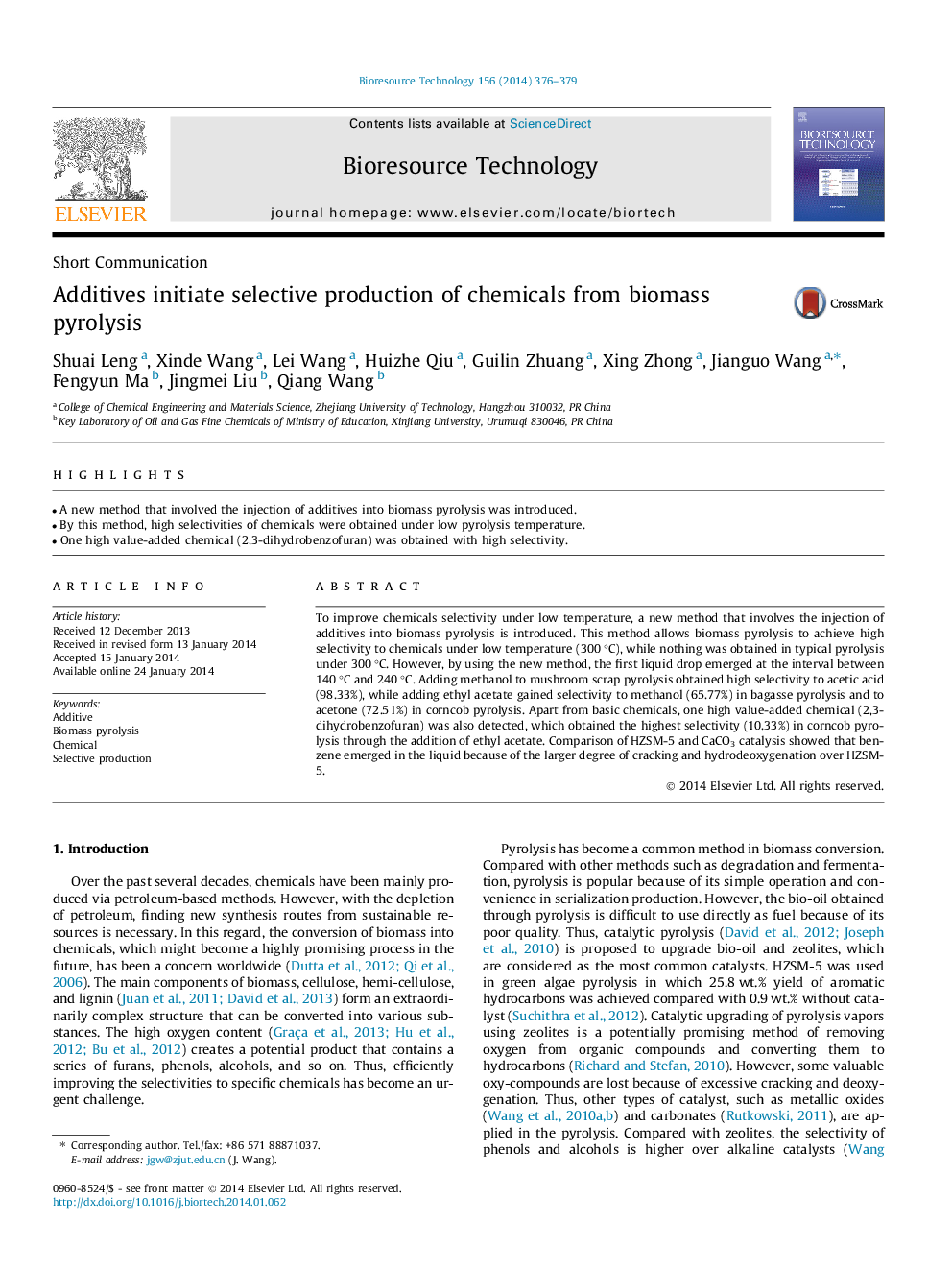| Article ID | Journal | Published Year | Pages | File Type |
|---|---|---|---|---|
| 7079030 | Bioresource Technology | 2014 | 4 Pages |
Abstract
To improve chemicals selectivity under low temperature, a new method that involves the injection of additives into biomass pyrolysis is introduced. This method allows biomass pyrolysis to achieve high selectivity to chemicals under low temperature (300 °C), while nothing was obtained in typical pyrolysis under 300 °C. However, by using the new method, the first liquid drop emerged at the interval between 140 °C and 240 °C. Adding methanol to mushroom scrap pyrolysis obtained high selectivity to acetic acid (98.33%), while adding ethyl acetate gained selectivity to methanol (65.77%) in bagasse pyrolysis and to acetone (72.51%) in corncob pyrolysis. Apart from basic chemicals, one high value-added chemical (2,3-dihydrobenzofuran) was also detected, which obtained the highest selectivity (10.33%) in corncob pyrolysis through the addition of ethyl acetate. Comparison of HZSM-5 and CaCO3 catalysis showed that benzene emerged in the liquid because of the larger degree of cracking and hydrodeoxygenation over HZSM-5.
Keywords
Related Topics
Physical Sciences and Engineering
Chemical Engineering
Process Chemistry and Technology
Authors
Shuai Leng, Xinde Wang, Lei Wang, Huizhe Qiu, Guilin Zhuang, Xing Zhong, Jianguo Wang, Fengyun Ma, Jingmei Liu, Qiang Wang,
